5 Facts About Paris & the Seine River
Five Fun Facts about Paris and The River Seine
Flowing through the heart of Paris, the River Seine pulses with life and romance in the City of Light and beyond. At its very core, Paris is a river city. The banks of the Seine are lined with cafes, bookshops, and charming neighborhoods. Outside of Paris, this gentle waterway flows through the tranquil village of Giverny, past the medieval timber-lined streets of Rouen, and onward to the picturesque port city of Honfleur, a favorite of Impressionist painters like Monet and Boudin. The River Seine is emblematic of Paris - past, present, and future. A cruise on the Seine is one of the best ways to experience France.
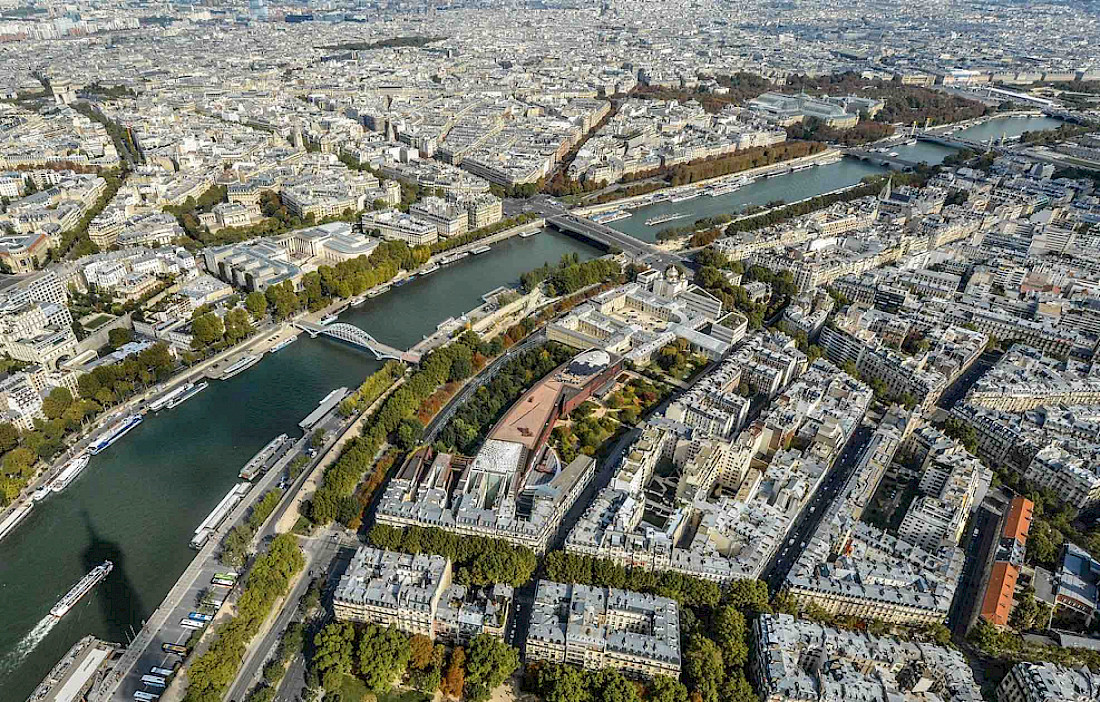
Just the Facts
The Seine is the third largest river in France. The Seine River emerges from the rich landscape of Burgundy in northeastern France. It flows northwesterly, gracefully curving toward Paris; languidly making its way to the historic coast of Normandy. It flows 485 miles through gorgeous countryside before emptying into the English Channel. The mouth of the river is the Seine Estuary between Le Havre and the idyllic harbor town of Honfleur, a must-see port town that is as colorful as it is historic.
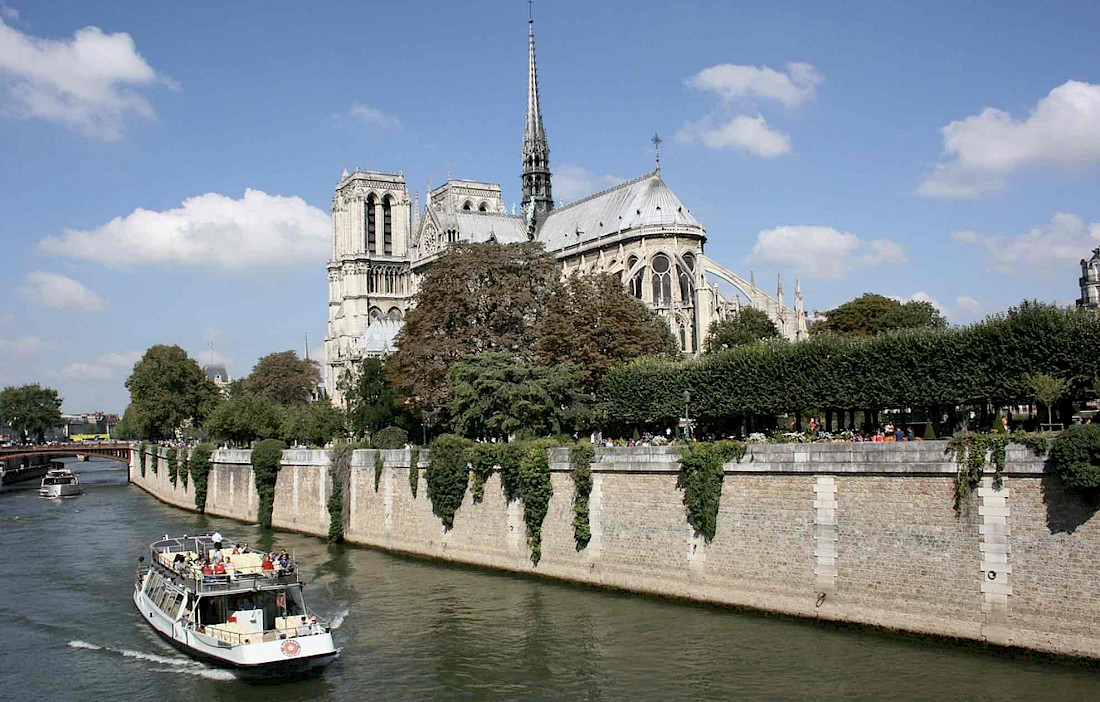
A Brief History
More than two thousand years ago, the Celtic tribe known as the Parisii established a settlement along the banks of the Seine near present-day Paris. They were drawn by its mild climate and the abundance of fish. The River Seine inherited its name from Sequana, the Celtic deity that inhabited the source of the Seine River, Source Seine on the Plateau of Langres in Burgundy. The Celts and the Romans would go on a pilgrimage to the springs where they built a healing temple. Today, visitors can still visit the springs and see a bronze statue of a graceful young woman standing on a boat representing Sequana, the ancient goddess of the Seine.
Eventually, the Celtic settlement was taken over by the Romans who wanted to control trade along the river. Julius Caesar claimed the Celtic settlement which they named Lutetia and later dubbed Civitas Parisorium. The Huns, the Franks, and the Vikings followed, making the area an integral part of their trade routes that connected Europe with Great Britain. Over the centuries, what began as a small fishing village, grew into the largest city in the western world by the 12th century. As a popular trading hub that saw Roman conquerors, Viking raids, medieval kingdoms, emperors, revolutions, and world wars the Seine River has remained the most beloved river of French culture that still connects it to the world.
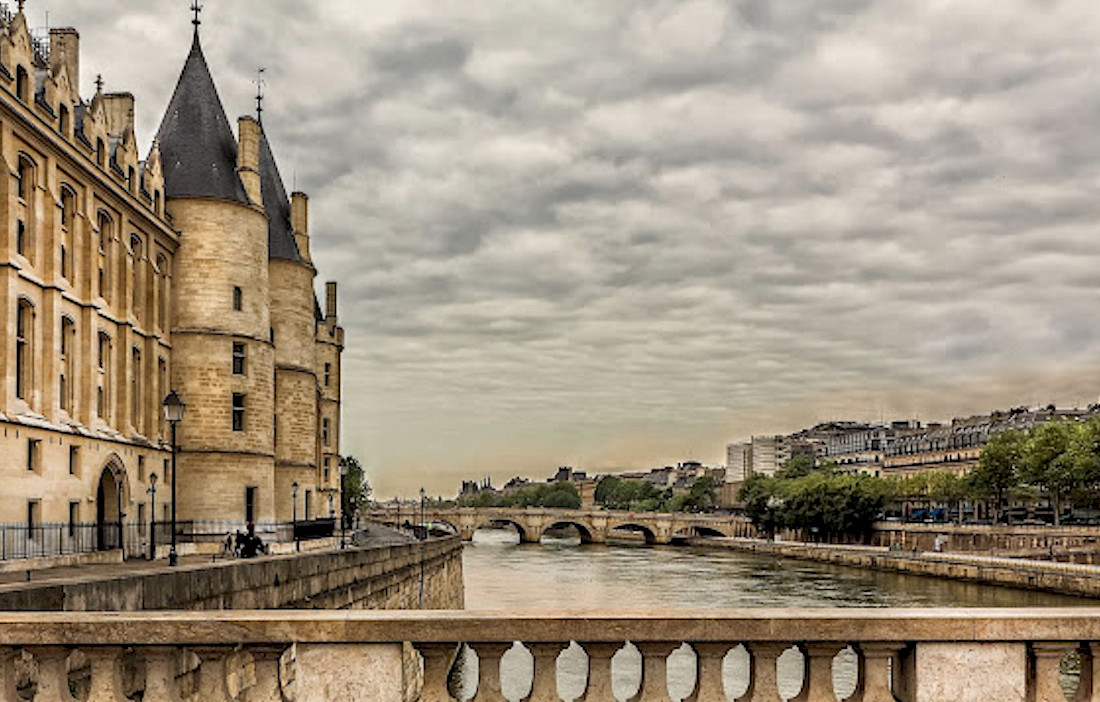
Architectural Gems & Bridges
The architectural grandeur seen from The River Seine is unforgettable. Its banks are embellished with architectural masterpieces from the Middle Ages to the 20th century. The Louvre, the Eiffel Tower, the Place de la Concorde, Notre-Dame Cathedral, and the Musee d’Orsay are the most iconic sites to see cruising the beloved Seine in Paris.
Paris has many bridges, 37 span The Seine. One of its most amazing bridges and the oldest is Pont Neuf which connects the Right and the Left Banks of Paris. The Pont Alexander III was completed in 1900 to celebrate Franco-Russian relations. This beaux-arts bridge is thought to be the most beautiful because of its ornate lamps and gilded sculptures. And, for romantics, there is the Pont des Arts, better known as the “Love-Lock Bridge,” where lovers put locks on the bridge and throw away the key to represent eternal love. Not to be a spoiler, but the locks have been removed because of their weight and replaced by panels of artwork.
Right and Left Bank
The Left Bank (Rive Gauche) has long been linked to writers, artists, and the cafe culture. Many great writers and artists like Hemmingway, Sartre, Picasso, and James Joyce have called this area home. Not to be missed are the workshops around the Rue de Seine, the lovely Saint Germain des Pres neighborhood, and the Latin Quarter, home of the Sorbonne University.
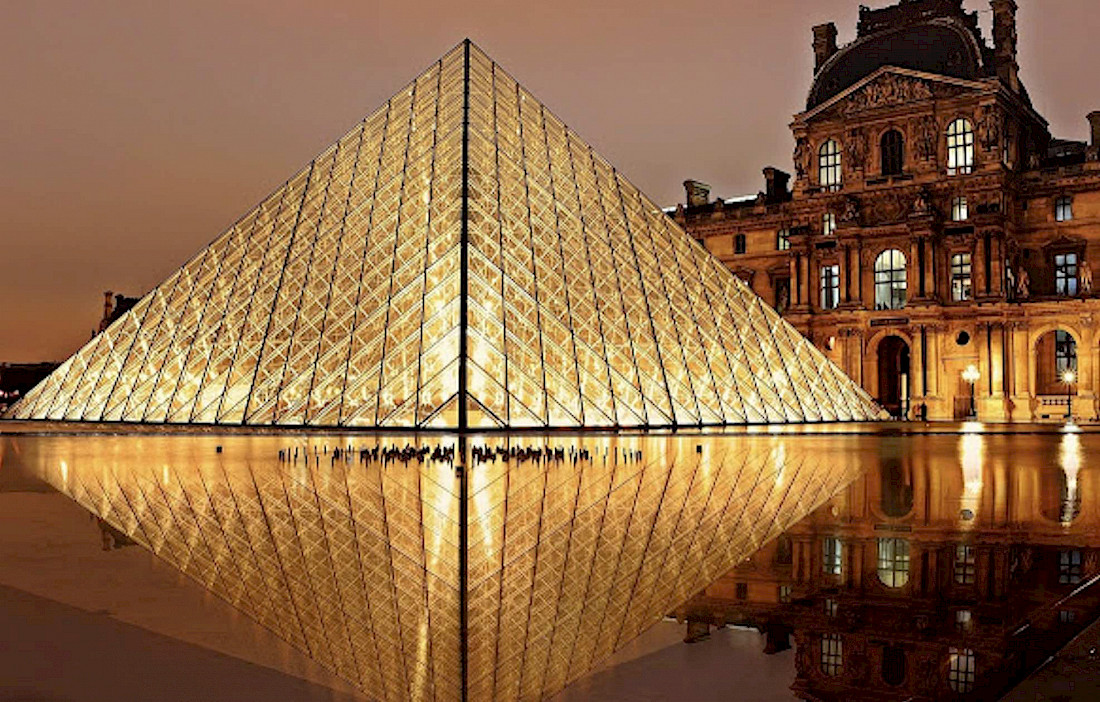
The Right Bank (Rive Droite) dates to the Middle Ages as a trading hub and has retained a more commercial vibe than the Left Bank. It is considered more fashionable and attractive with its famous Avenue des Champs Elysées, Avenue Montaigne, and Place Vendome at its sophisticated heart. On the Right Bank, you will find the Louvre, the Pantheon, and both of the city’s Opera Houses. Both the Left and the Right Bank are UNESCO World Heritage Sites in Europe.
World Heritage Sites in Paris
In 1991, a collection of properties that are culturally important to France that cover Paris and the banks of the Seine were created as UNESCO World Heritage Sites. This area contains some of the world’s most treasured landmarks. These world-renowned sites are amazing no matter how you explore them.
Chateau de Versailles is the masterpiece of the Sun King Louis XIV that transformed this property from a modest hunting lodge to one of the most elegant palaces in the world. The palace has 2,300 rooms including the famous Hall of Mirrors with 357 mirrors and acres of sublime French-style musical gardens replete with fountains and priceless statuary. It was the seat of the French kings until the French Revolution when the Sun-King’s grandson, Louis XVI, and his queen, the ill-fated Marie Antoinette lost their heads during the last troubled years of the French Monarchy.
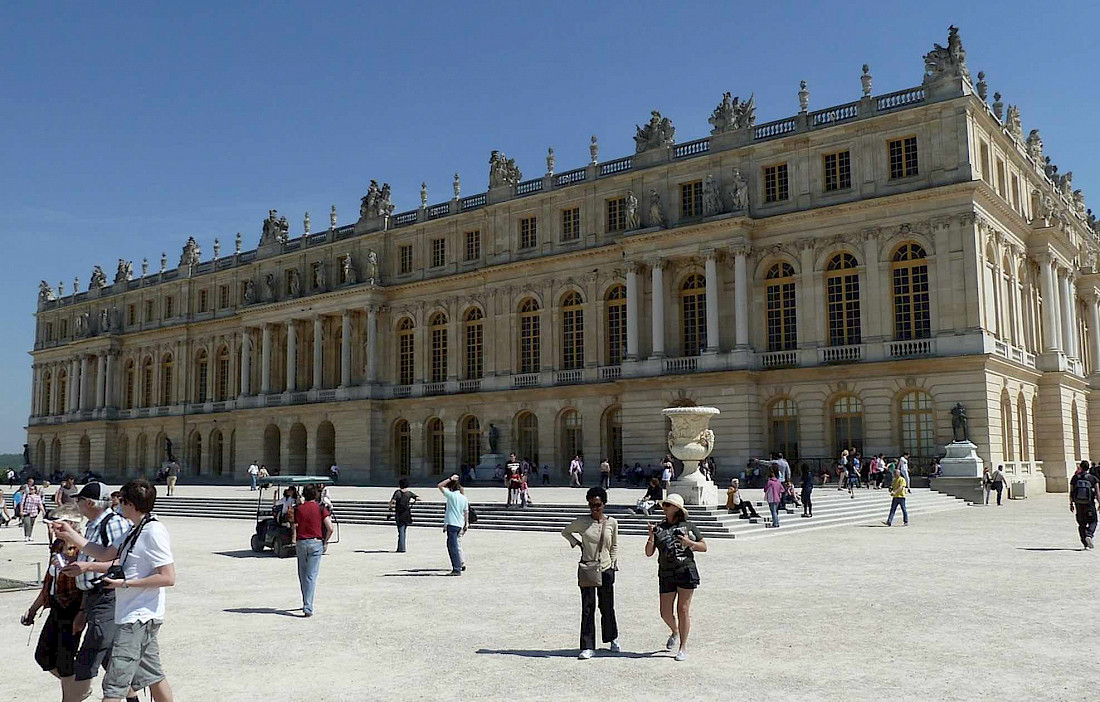
Chateau de Fontainebleau is a vast estate built in the Renaissance and Classical styles in the 12th century. It is the only royal residence used by Louis VII in the 12th century to Napoleon in the 19th century. In over eight centuries, 34 emperors and two monarchs spent time at this peaceful estate. Of special interest are Marie-Antoinette’s Turkish boudoir, and Empress Eugenie’s Chinese Museum.
The Louvre was originally built as a castle but for the last two centuries, it has been a museum that opened to the public in 1793. Today it contains 480,000 pieces of art and covers 72,735 square feet. It has over 10,000 paintings including one of the most famous - the Mona Lisa by da Vinci, in addition to 35,000 sculptures, gorgeous jewels, textiles, furniture, and its famed Egyptian, Greek, and Roman galleries, to name a few.
The Banks of the Seine - The eternal question, what bank is better… the left or the right? Both have been declared a World Heritage Site and strolling along their banks or cruising by them is a journey through the history of Paris. Along the banks of the river, you will find many of Paris’s most important landmarks.
The Eiffel Tower named after its creator, Gustave Eiffel, it is the tallest structure in France. This pylon-shaped self-buttressing architectural wonder is the symbol of Paris and of France itself! Needless to say, the Eiffel Tower has inspired artists, writers, visitors, and residents alike. It is 1,023 feet tall and has 1,710 steps to its summit…so get climbing!
The Cathedral of Notre Dame was constructed between the 12th and 14th centuries and is considered a Gothic marvel. It has breathtaking stained glass windows, elaborate stone carvings, and soaring spires. It houses numerous religious and historical artifacts. In 2019, a fire engulfed the cathedral causing extensive damage including the destruction of its roof and spire. It is undergoing restoration.
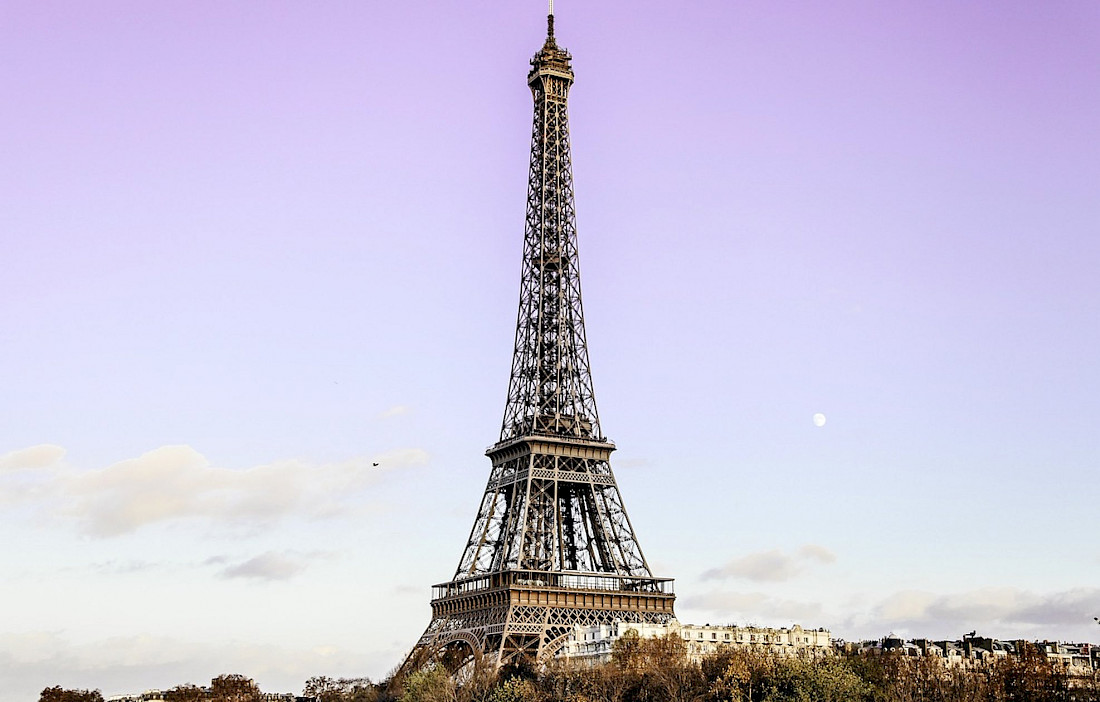
The Sainte Chapelle is a royal chapel built in the Gothic style. It is located in the Palais de la Cite and was the residence of the Kings of France until the 14th century. Visitors are dazzled by the 1,113 stained glass windows that make it radiant when the sun hits them just right.
The Pont Neuf was built in 1578 by King Henri IV and has the distinction of being the oldest standing bridge built across the River Seine. This outstanding example of medieval architecture has 12 arches and 384 grotesque faces that decorate its cornices. Not to be missed is the equestrian statue of King Henri on his horse.
The Marais Quarter was built in the 13th century by the Knights Templar. Through the centuries it became the hot spot for aristocrats and home to many stunning mansions that promised both privacy and luxury. It is an excellent example of early urban planning that has been used around the world.
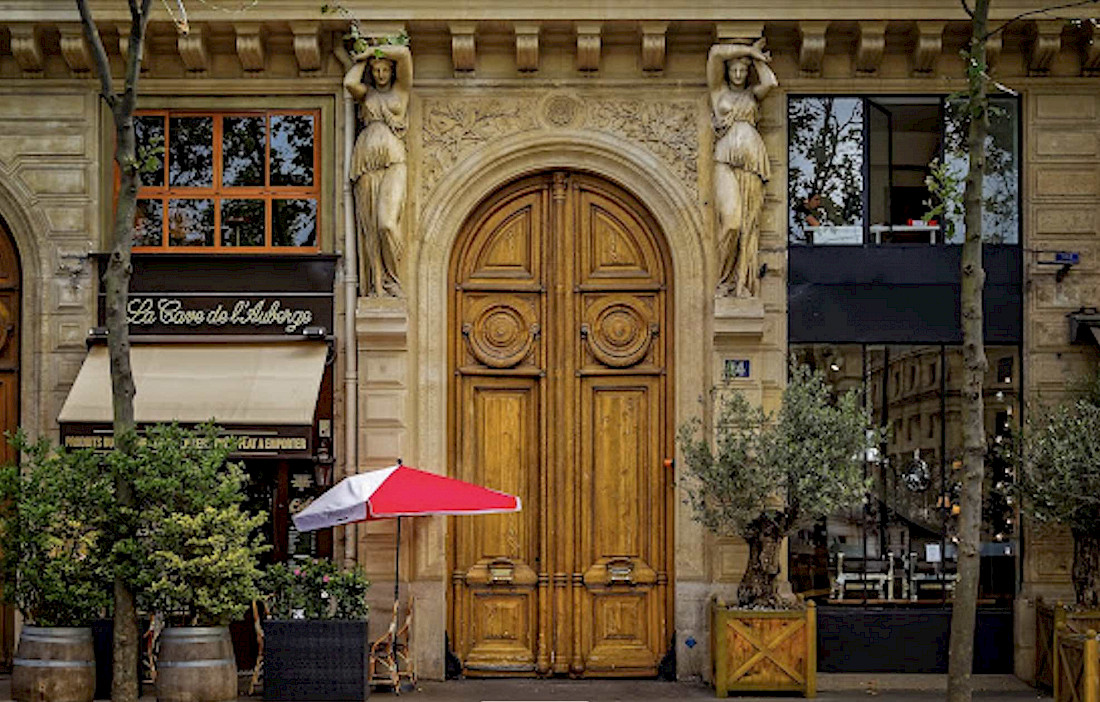
Ile-Saint-Louis is one of two natural islands on the river that is a historically relevant residential area of Paris. Many urban construction projects were undertaken during the reign of Louis XIII including this one on an island that was a favorite place of his son. Today, this classic French neighborhood has stood the test of time because it serves as an excellent example of Parisian town planning of the 17th and 18th centuries.
Les Invalides and Ecole Militaire This domed building was commissioned by Louis XIV in 1670 to care for wounded soldiers. When Napoleon visited in 1815, just before his abdication, over 5,000 soldiers were being cared for. The Chapel of the Invalides was built at the end of the 17th century and is the final resting place of Napoleon. Above the lintel at the entrance of the tomb, under the dome, is the inscription that is an extract from Napoleon’s will…
“I wish my ashes to rest on the banks of the Seine among the people of France whom I so much loved.”
Monnaie de Paris was established in 864 under Charles II. It is France’s oldest institution and one of the world’s oldest monetary manufacturing enterprises. Today this museum highlights manufacturing history with more than 170,000 coins, medals, tokens, historical tools, vintage machinery, and more. A visit also includes a factory tour of artisans who demonstrate decorative casting methods and engraving.
To see Paris from the River Seine is an unforgettable adventure into the very fabric of the culture and lifestyle that is France.
